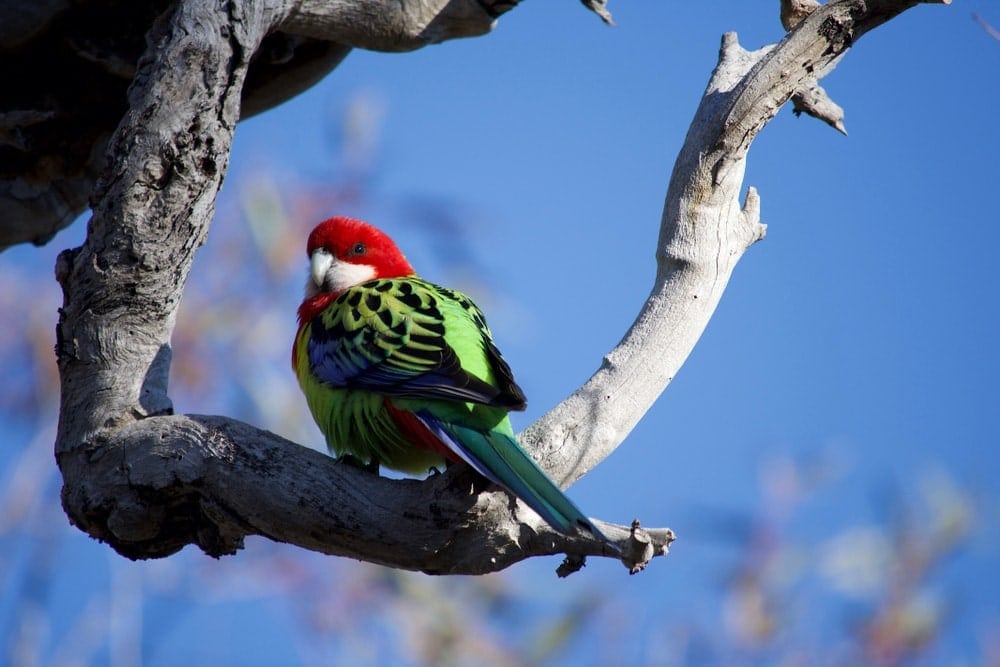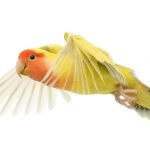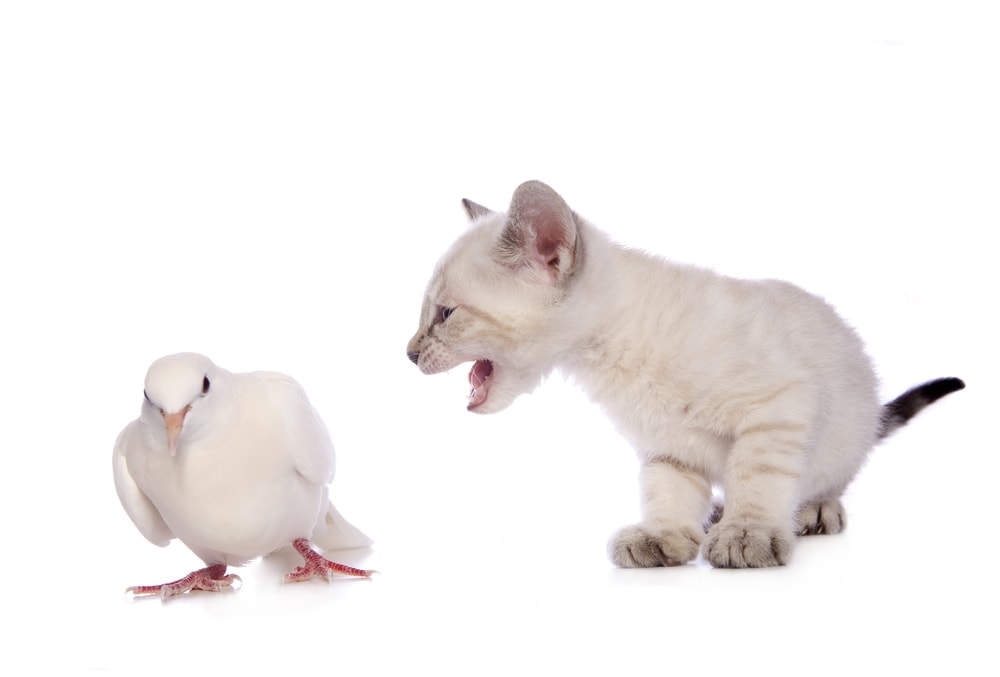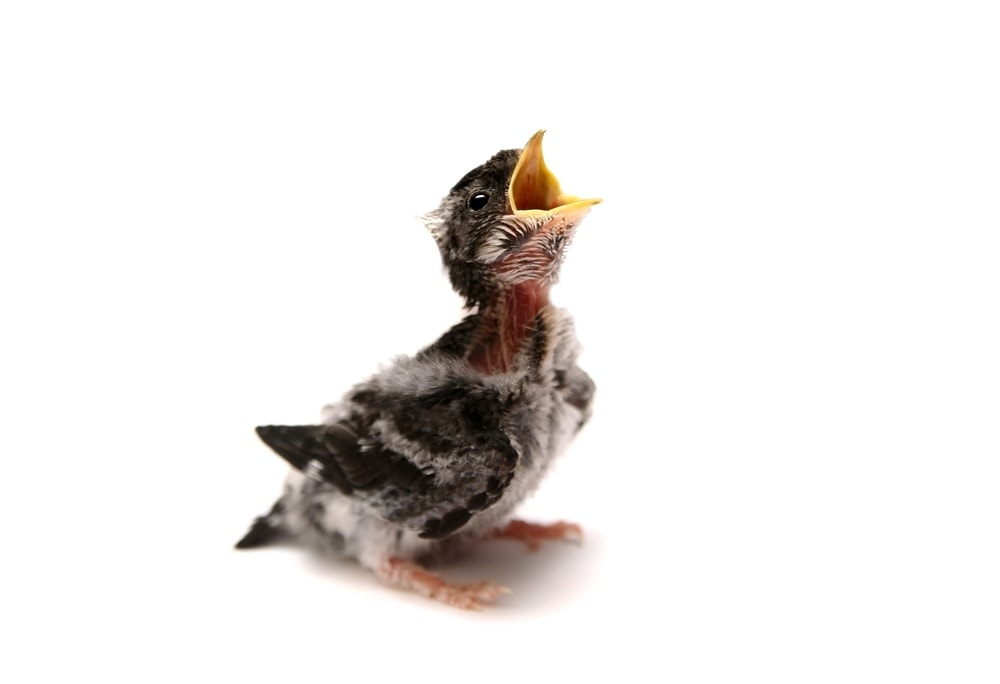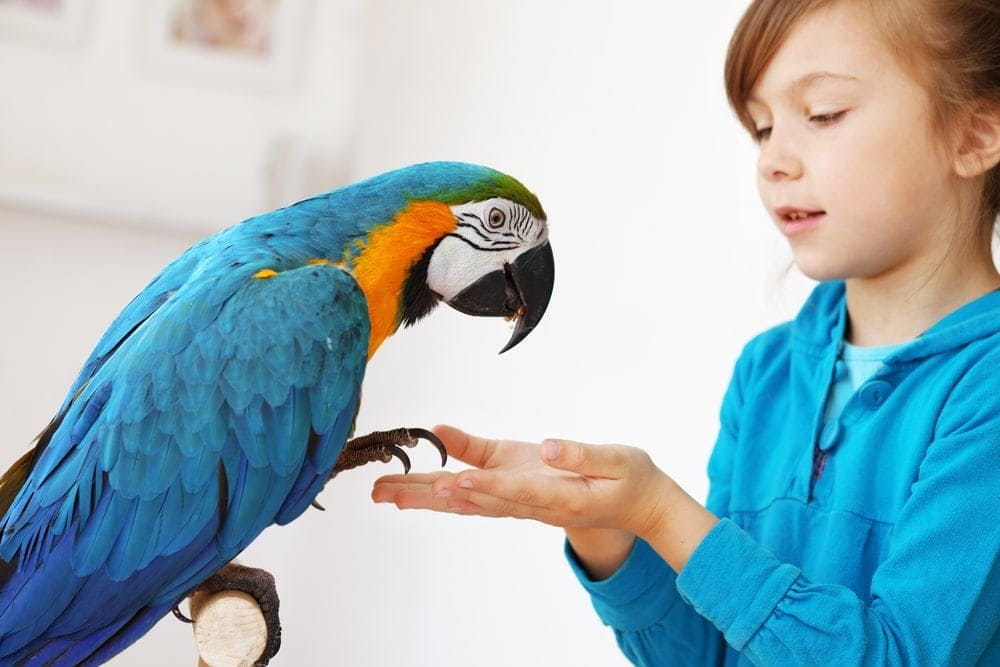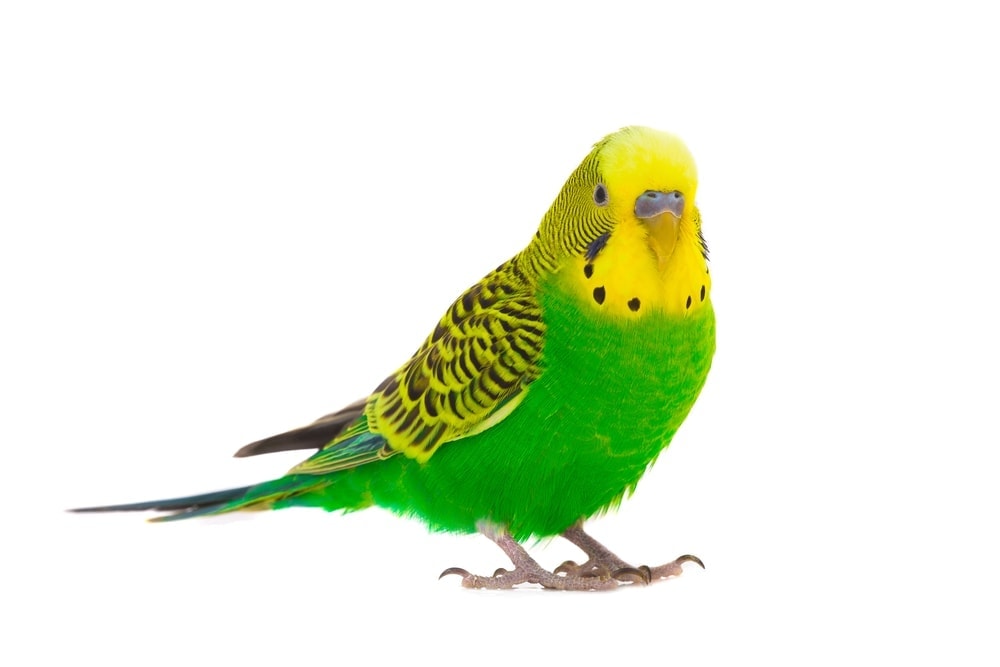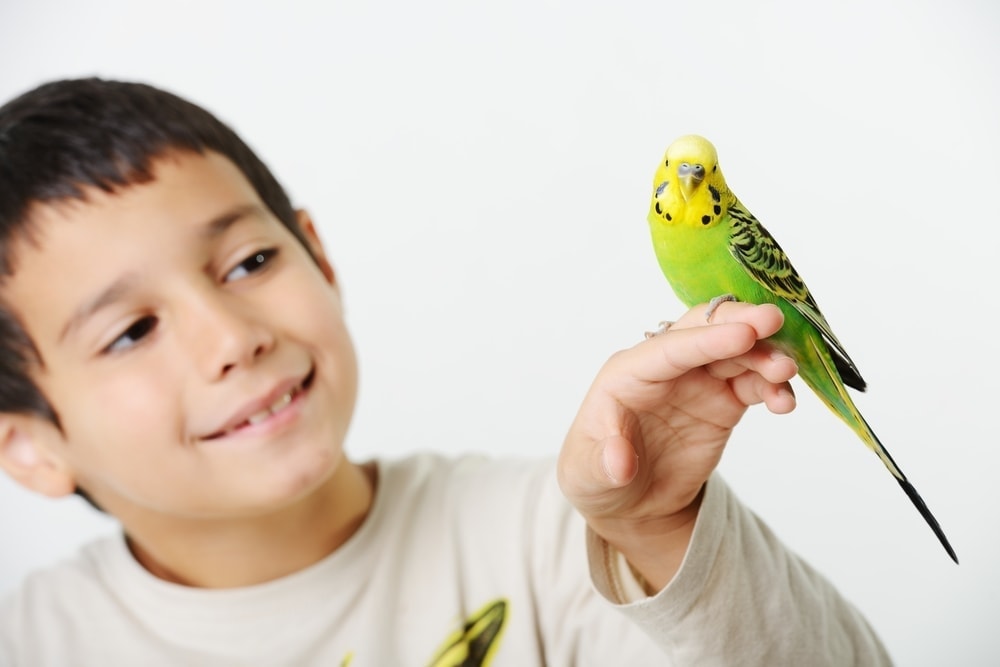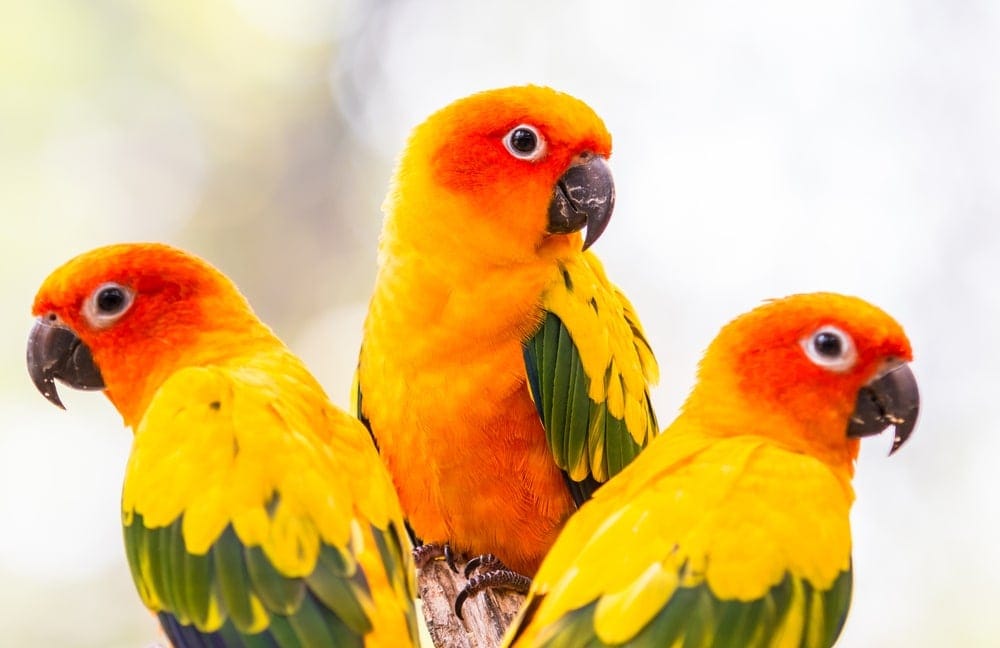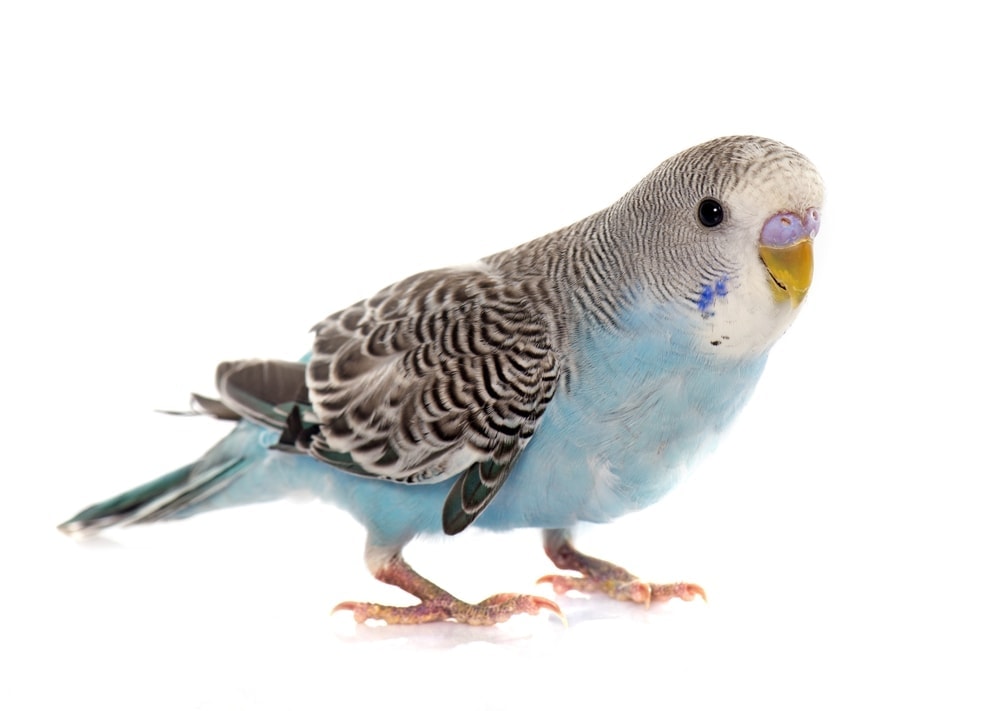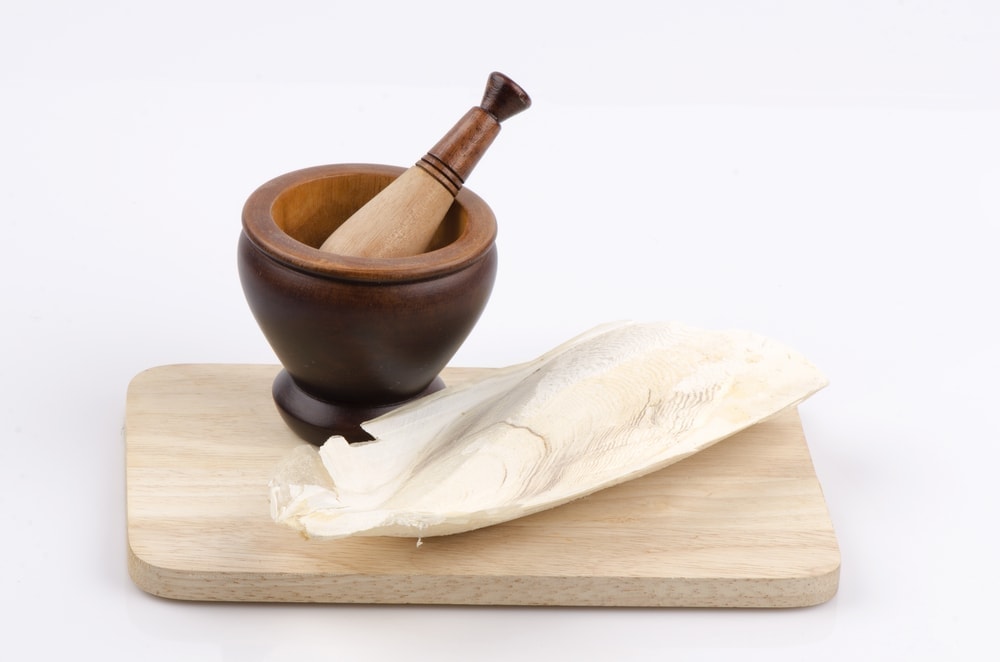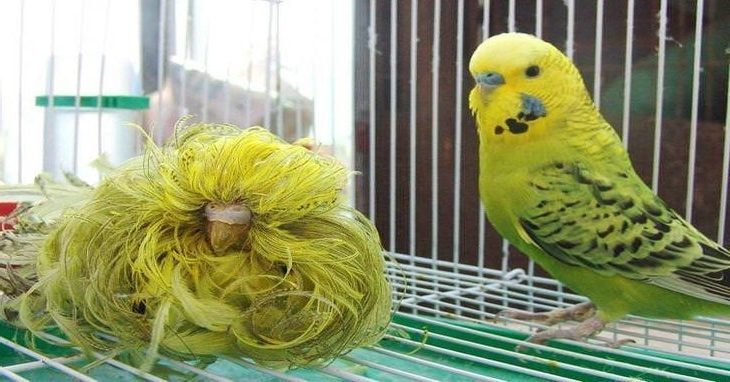The Rosella has many different species, but it is generally sociable and easy to tame.
This bird makes for an excellent companion over the long term.
Appearance
The look of this bird depends on the species, but it can grow up to 4.2 ounces and 14.5 inches. These are fairly large birds that also quite colorful.
Rosella Lifespan
Rosella birds can live up to 20 years when they are properly taken care of, though it depends on the species. There are some species of this bird that are more prone to certain health problems than others.
Types of Rosellas
These birds can be classified within two different groups—Blue-Cheeked Rosellas and White-Cheeked Rosellas.
Some of the Blue-Cheeked varieties include:
- Adelaide Rosella: This particular species has red and orange plumage and can grow up to 14.4 inches in length. The females are typically smaller and have more of an orange coloration.
- Crimson Rosella: The Crimson Rosella has blue cheeks and red plumage. It can grow up to 14 inches with a wingspan of 7.5 inches across. Females have a narrower bill with green plumage.
- Green Rosella: The Green Rosella has a vibrant yellow body with blue cheeks. They also have a distinctive red band across the forehead.

Some of the White-Cheeked varieties include:
- Eastern Rosella: This species is very colorful with a red head and yellow body. The wings are a combination of pale yellow and different shades of blue.
- Golden Mantled Rosella: The Golden-Mantled Rosella also has a red head, but with green yellow and black flight wings. There is also a decent amount of dark blue coloration on the bottom part of their wings.
- Northern Rosella: The Northern variety of this bird is characterized by a dark crown with white cheeks. It can grow up to 11.2 inches long.
The Rosella’s Personality
These birds are generally very sociable with an affable personality. They might sit on your shoulder while you walk around, but they aren’t usually into being cuddled. You need to be very careful when handling these birds, because they can be a bit temperamental.
If your Rosella is tame enough, you can have it around older children without having to worry. You should ideally have at least some amount of experience as a bird owner before getting one of these.
It is important to keep in mind that Rosellas can have different personalities based on species. These birds can be very entertaining at times, as they are fairly high-energy. Because they are very intelligent, training usually isn’t much of an issue. The sooner you start training your bird, the easier it is going to be.
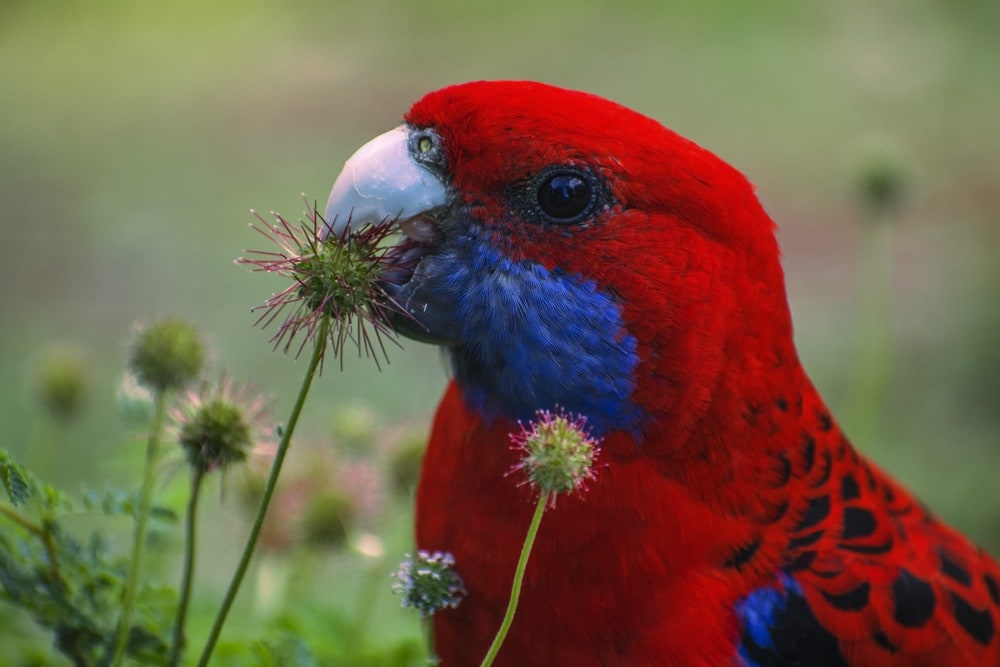
Natural Habitat
Rosellas can be found in the southeastern regions of Australia along with the surrounding islands. These birds tend to favor woodland areas and parks. They are remarkably adaptive, which means they can thrive in both rural and urban environments.
Rosella Care Guide
1. Rosella Diet
Rosellas need a good amount of fresh fruits and vegetables on a regular basis. You should also feed them seeds, buds, fruits, and the occasional insects. These birds need a very balanced diet in order to stay healthy over the long term.
Canary and cockatiel seeds are perfect for the Rosella. You should also focus on giving them sprouted seeds, which are very nutritious and don’t contain a ton of fat. These seeds will help to keep your bird in good health.
These birds enjoy eating small worms and insects, so you will need to keep that in mind as well. Boiled eggs are a great source of protein for your bird.
2. Environment
It is recommended that you keep your Rosella with other birds of the same species. This will provide them with company and mental stimulation on a regular basis. You will have to get your bird a big cage that it will be able to fly around in.
You need to get a cage for your Rosella that is no smaller than 40 by 16 by 7 feet. You’ll also want to provide your bird with leafy branches in the cage so it doesn’t get bored easily. Make sure that all of the branches are not going to be toxic to your bird.
When you are shopping for a nest box for one of these birds, it should measure about 10 by 11 by 24 inches. Make sure that your bird has numerous things inside its enclosure to climb on. This too will go a long way towards preventing boredom.
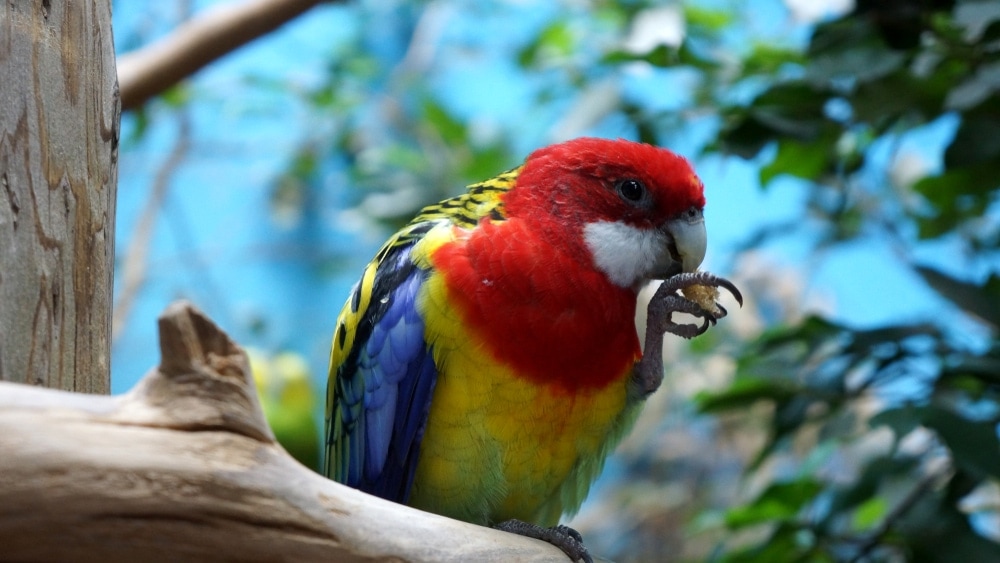
3. Common Health Problems
Each Rosella species has its own series of health problems that it is prone to. These birds can develop intestinal worm infections, especially if they are kept in an outdoor aviary. They can also develop psittacosis, which is a common disease among many different birds.
If you want to keep your Rosella healthy and happy, you will need to take it in for checkups at the vet every six months or so.
4. Grooming
Fortunately, these birds do not typically require much grooming. You can mist your bird with a spray bottle filled with water every couple of days. You will also want to think about giving it a bowl of water to bathe in.
Rosella Price
You can pay anywhere from $80 to $300 for a Rosella bird. The total cost largely depends on the particular species.
Conclusion
- Rosellas can live up to 20 years if they are properly cared for on a daily basis.
- These birds are fairly social and don’t usually make a lot of noise.
- You need to feed your bird a nice balance of seeds, fruits, vegetables, and even insects to keep them healthy.
- The cage that your buy for your Rosella should be fairly large so that it has plenty of room to fly around.
- These birds do extremely well when kept in a cage with their own kind.
- If your Rosella is kept in an outdoor aviary, it is far more prone to contract intestinal worm infections.
- Make sure that you give your bird a small bowl of water to bathe in every other day.
